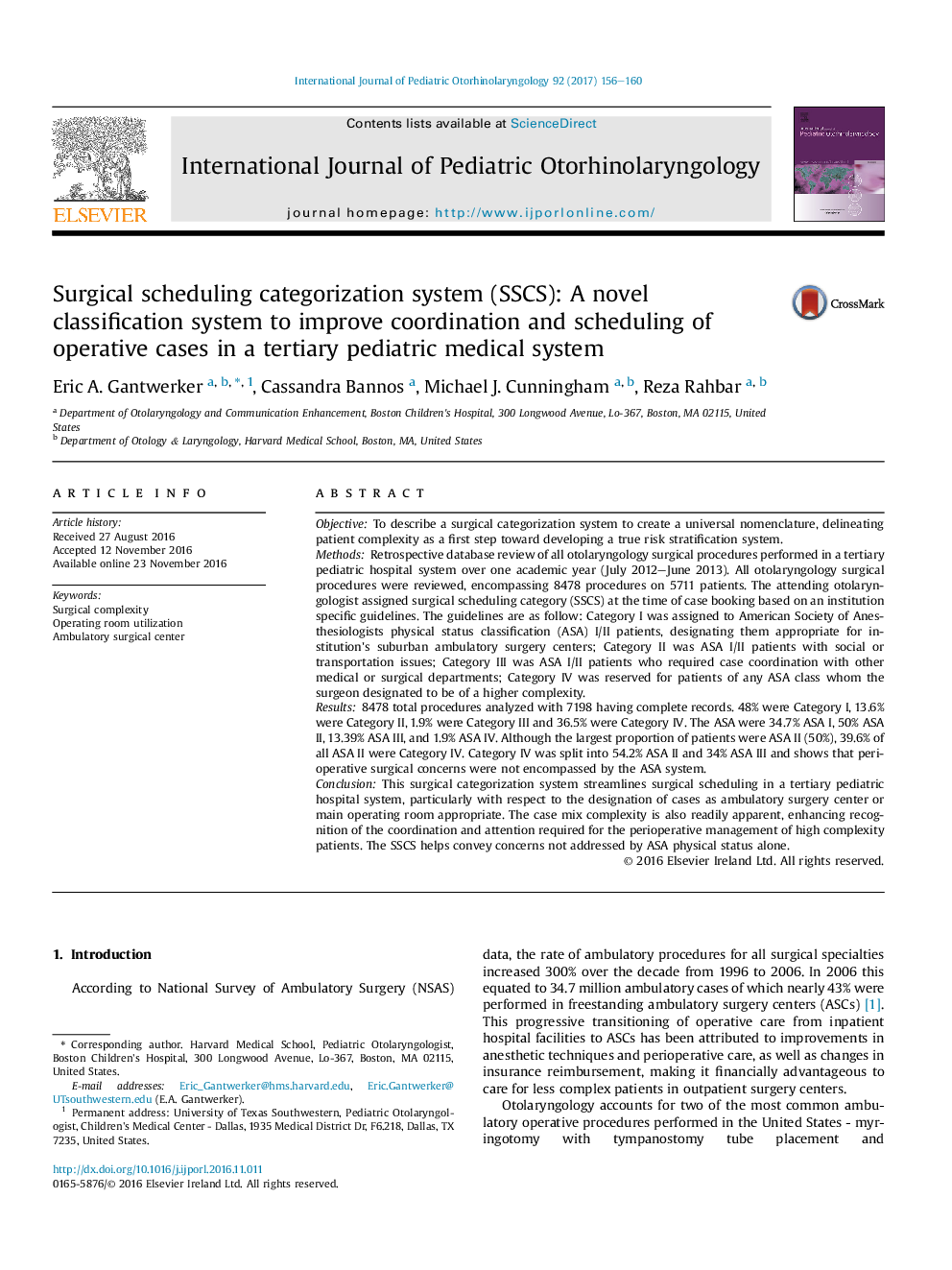| کد مقاله | کد نشریه | سال انتشار | مقاله انگلیسی | نسخه تمام متن |
|---|---|---|---|---|
| 5714821 | 1605976 | 2017 | 5 صفحه PDF | دانلود رایگان |

ObjectiveTo describe a surgical categorization system to create a universal nomenclature, delineating patient complexity as a first step toward developing a true risk stratification system.MethodsRetrospective database review of all otolaryngology surgical procedures performed in a tertiary pediatric hospital system over one academic year (July 2012-June 2013). All otolaryngology surgical procedures were reviewed, encompassing 8478 procedures on 5711 patients. The attending otolaryngologist assigned surgical scheduling category (SSCS) at the time of case booking based on an institution specific guidelines. The guidelines are as follow: Category I was assigned to American Society of Anesthesiologists physical status classification (ASA) I/II patients, designating them appropriate for institution's suburban ambulatory surgery centers; Category II was ASA I/II patients with social or transportation issues; Category III was ASA I/II patients who required case coordination with other medical or surgical departments; Category IV was reserved for patients of any ASA class whom the surgeon designated to be of a higher complexity.Results8478 total procedures analyzed with 7198 having complete records. 48% were Category I, 13.6% were Category II, 1.9% were Category III and 36.5% were Category IV. The ASA were 34.7% ASA I, 50% ASA II, 13.39% ASA III, and 1.9% ASA IV. Although the largest proportion of patients were ASA II (50%), 39.6% of all ASA II were Category IV. Category IV was split into 54.2% ASA II and 34% ASA III and shows that peri-operative surgical concerns were not encompassed by the ASA system.ConclusionThis surgical categorization system streamlines surgical scheduling in a tertiary pediatric hospital system, particularly with respect to the designation of cases as ambulatory surgery center or main operating room appropriate. The case mix complexity is also readily apparent, enhancing recognition of the coordination and attention required for the perioperative management of high complexity patients. The SSCS helps convey concerns not addressed by ASA physical status alone.
Journal: International Journal of Pediatric Otorhinolaryngology - Volume 92, January 2017, Pages 156-160